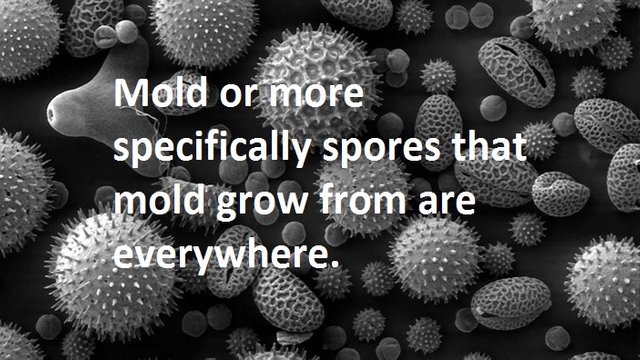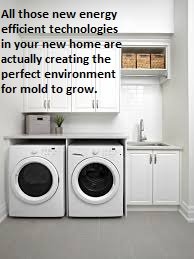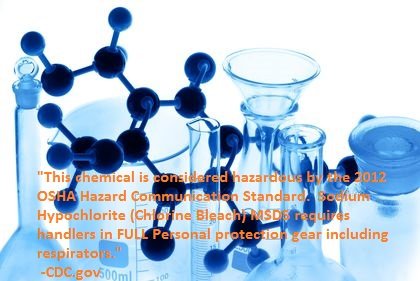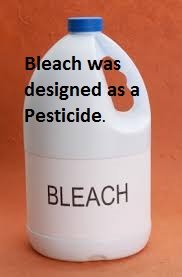Home Health: A Personal Experience with Black Mold with Prevention Tips - #2
Hey Everyone,
Josh here. I hope you all had a great weekend and you're ready for the week ahead!
My weekend was spent helping my 86 year old Grandmother.
She had a small mouse problem.
I managed to catch the mouse and do some house cleaning and carpet cleaning for her. She was of course ecstatically happy I removed this little guy from her home.
On to the Mold
There’s many people out in the world that have their own opinions about Black Mold. Possibly some of those people maybe correct in their assumptions, maybe there's some misconceptions. I would like to let you know in this post some of the misconceptions about mold in general and how it ties in with your home.
A misconception out there and in my opinion maybe the biggest about mold is that your home can be completely mold free. Ok this is simply not possible, mold or more specifically spores that mold grow from are everywhere .

It's in the air outside, It’s in your A/C ducts, it’s in your bathroom, it’s in your kitchen and it’s even on you this very second.
Now your home can be free of growing mold colonies. Even though you have mold spores inside your home a large amount of those spores will simply move along to a more hospitable environment for growth. A place that is moist, warm and with a ton of organic material to feed from. I like to think of Hawaii or Florida. Both are places I would love to vacation because of the friendly warm environment. If there are places or rooms in your home that remind you of either of Hawaii or Florida, look out because mold could be planning a permanent vacation there.
Not Seeing Mold is a BIG Problem
You are becoming much more familiar with mold maybe you are starting to think, “I don’t see any mold in my home, can it still be a problem for me and my family?” The answer is simply: YES. You don't know what you don't know. The very nature of mold is to grow and thrive in dark, minimal air flow environments. Meaning that it is most likely in places you would not think to look in your home. This why it is important to have your home inspected and sampled on a regular bases. Either personally or hire a professional.
Which brings me to my next big misconception: the age of your home. Let's discuss new homes.
“Hey wait Josh!.... My home is brand spanking NEW,” you say.
Well my reply is congrats on the new home. It’s still susceptible to mold growth. Even with all the new home super energy efficient technology in today's new homes, mold can find some of the most inconspicuous place to grow. In fact older homes seem to have less mold problems than newer ones.
Say What?... Yes, you read that right. An older home has what is most commonly referred to as a draft. This draft is air movement and this will prevent the build up moisture in your home, thereby reducing the amount of mold colonies.
New Houses, New Problems
So what’s the deal with new homes? With all that new snazzy energy stuff? A newer home is great for saving on energy expenses but worse when it comes to preventing mold growth. Lets look at the new trend of placing the laundry room upstairs in new homes. This laundry room is usually windowless with only a small fan or worse air duct for ventilation. Now most new homes are airtight to save on energy. This leads to moisture build up. All that moisture that is produced has no place to go. Except on to your drywall, air ducts and out the door of the laundry room to the rest of the home. That is all a tiny mold spore needs to become a big problem.

Mold Problems
“Ok, I might have a mold problem,” you say. “But if I catch it in time and just bleach the heck out of it, I’ll be good...Right?”
Alright there’s a few things I would like to address here. Yes, everyone in your home should always keep an eye out for any type of growth. Yes, if you catch a mold colony early enough you can save yourself a large amount cash in cleanup and remediation.
Hold The Bleach
Bleach will add to your woes on anything other than a smooth surface like a counter top or bathtub. Mold on the other hand prefers porous surfaces like drywall and wood cabinets because mold colonies have roots. Sure the bleach will kill all the mold on the surface, only.
Now in some extreme situations that I’ve seen is the bleach kill the mold on the surface, then the water in the bleach soaked into the porous material and soak down to the mold roots. Then a few days later all those roots growing back.
Bleach is the last cleaner I would use for killing mold. Check out the latest Environmental Protection Agency (EPA) report on using bleach to kill mold.

http://www.epa.gov/mold/moldguide.html
https://www3.epa.gov/pesticides/chem_search/ppls/066426-00003-20101102.pdf
Now that we brought up the EPA, I would like to just briefly touch on the fact that bleach was designed to be used as a pesticide.

Yes, you read that correctly, a pesticide. A pest is considered an unwanted insect, rodent, a weed or a fungus. So bleach is a pesticide for fungus and an antimicrobial. This means that the fact that it cleans is a by-product of clever marketing. Bleach is also listed as a hazardous material with long term carcinogenic effects. In my opinion this is a one, two hit out of my cleaning cabinet never to be used again.
Organic Materials
I mentioned previously that mold prefers organic material to grow on.
Does that mean that mold will only grow where there’s organic material? No, mold can take root anywhere. All houses will have, to some degree, dust and dirt. This means that a devastating mold colonies can start in any place of your home.
Toxic Or Non-Toxic
This is maybe the worst assumption a person can make, “I have mold, but it’s not toxic.”
If you see or suspect mold growth, “How do you know for sure it is toxic or non-toxic?” The majority of mold in your home will usually have the same kind of blackish-gray hue to it and will grow in the same place as toxic black mold. Even professional that have dealt with black mold for years can't even see the difference between toxic and non-toxic molds. Only after testing a sample of a mold colony can you or a professional determine if you have toxic black mold or something else. Keep in mind, all mold growths cause damage to your home. So it is in your best interest and your health to rid your home of any mold colonies that has taken root.
Different Reactions
Mold effects everyone in different ways. Some people are affected greatly by it, some people may not get any symptoms at all. That’s just how people are in general. Mold are similar to plants, not everyone has an allergy to the same type of plants. Now toxic mold by its very nature will eventually affect everyone; molds that are to a lesser degree less toxic can and will affect people in the form of an allergic reaction. How these reactions manifest is unknown and can vary from person to person. One person may only get a runny nose and watery eyes, another a rash and asthma and the next person may experience memory loss and migraines.
I Have Mold Growth, Now What?
Ok, so you had your home inspected found the mold and removed it all. Mission accomplished, right? Well….
Look at mold growth as a symptom to a much larger issue. Mold needs these things to grow,
- Low air flow
- Moisture
- Organic material
Water is the easiest to find and fix. If your mold was growing around a leaky pipe. All you need to do is fix the pipe. If it was growing in your crawl space because of high moisture, insulate the space and redirect some of the moisture so it goes outside and not in your home. Use a dehumidifier for places in your home that receive constant warm and cold air. Set up a schedule to systematically clean out behind furniture, appliances and cabinets on a regular basis. Review and inspect your home on regular schedule.
Working on alleviating the causes of mold in your home will help you live a happier, healthier life and improve on the longevity of your home. Many times regular inspections for something as small as mold can assist in discovering other issues your home may have. This can help you fix these issues before they become a major disaster. Plus you have the added benefit of sleeping better at night with the confidence that you are in control of the state of your home.
That's all for today folks.
Please leave some comments and be sure to visit some of my previous post about tips on how to live in a healthier home.
...And Stay Safe!
Resources:
http://www.epa.gov/mold/moldguide.html
https://www3.epa.gov/pesticides/chem_search/ppls/066426-00003-20101102.pdf
A resource from OSHA (Not used, has good info)
https://www.osha.gov/dts/shib/shib101003.html
Previous post:
Protect Yourself: Plastics and Chemicals in the Home
Home Health: A Personal Experience with Black Mold with Prevention Tips - #1
My Intro Post to Steemit
Hello Steemers! Introduction Post
Great post.
Thanks :)